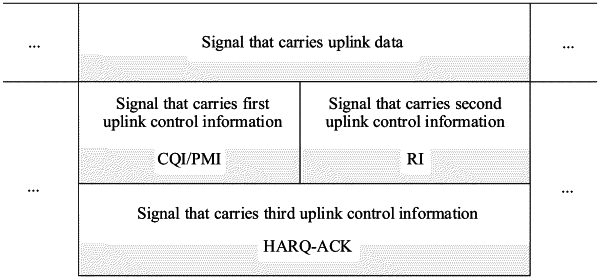| CPC H04L 5/0053 (2013.01) [H04L 5/0016 (2013.01); H04L 5/0044 (2013.01); H04L 5/0055 (2013.01); H04L 5/0057 (2013.01); H04W 72/02 (2013.01); H04W 72/1268 (2013.01)] | 26 Claims |

|
1. A method for transmitting an uplink signal, comprising:
generating, based on a first non-orthogonal access parameter, a signal that carries uplink data, wherein the signal that carries the uplink data occupies a first time-frequency resource;
generating, based on a second non-orthogonal access parameter, a signal that carries first uplink control information, wherein the signal that carries the first uplink control information occupies a second time-frequency resource, and the first time-frequency resource overlaps the second time-frequency resource; and
the first non-orthogonal access parameter is different from the second non-orthogonal access parameter; generating, based on a third non-orthogonal access parameter, a signal that carries second uplink control information, wherein the signal that carries the second uplink control information occupies a third time-frequency resource, and the first time-frequency resource overlaps the third time-frequency resource, and the first non-orthogonal access parameter is different from the third non-orthogonal access parameter;
the second time-frequency resource overlaps the third time-frequency resource and either only partially overlaps or does not overlap a fourth time-frequency resource carrying a third uplink control information, and the second non-orthogonal access parameter is different from the third non-orthogonal access parameter;
sending the signal that carries the uplink data and the signal that carries the first and second uplink control information; and
wherein at least one of the first non-orthogonal access parameter or the second non-orthogonal access parameter comprises different non-orthogonal access spreading factors and wherein the third uplink control information is one of a channel quality indicator, precoding matrix indicator and a ranking indicator.
|